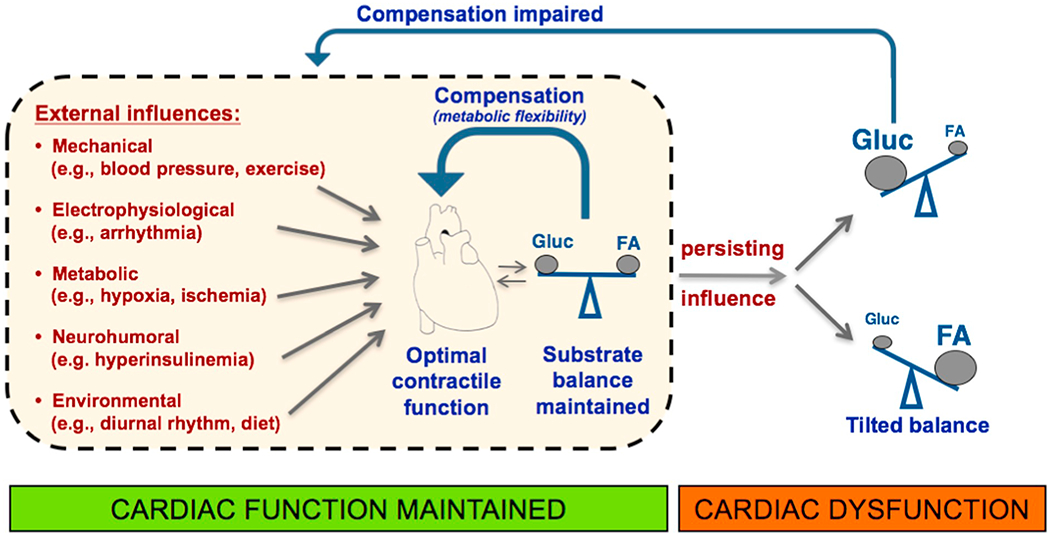Fig. 2.

Summary of the association of the myocardial fatty acid–glucose fuel balance and cardiac contractile function. The scheme illustrates the ability of the heart to adapt its substrate preference to short-term external influences so as to secure an adequate ATP production for optimal cardiac contractile function, together referred to as metabolic flexibility. In case of a persisting external influence, however, whereby the balance of metabolic substrates is permanently shifted towards the utilization of a predominant substrate (either glucose or fatty acids), this metabolic flexibility is markedly impaired leading to suboptimal ATP production and impaired contractile function.
FA, (long-chain) fatty acids; Gluc, glucose.
